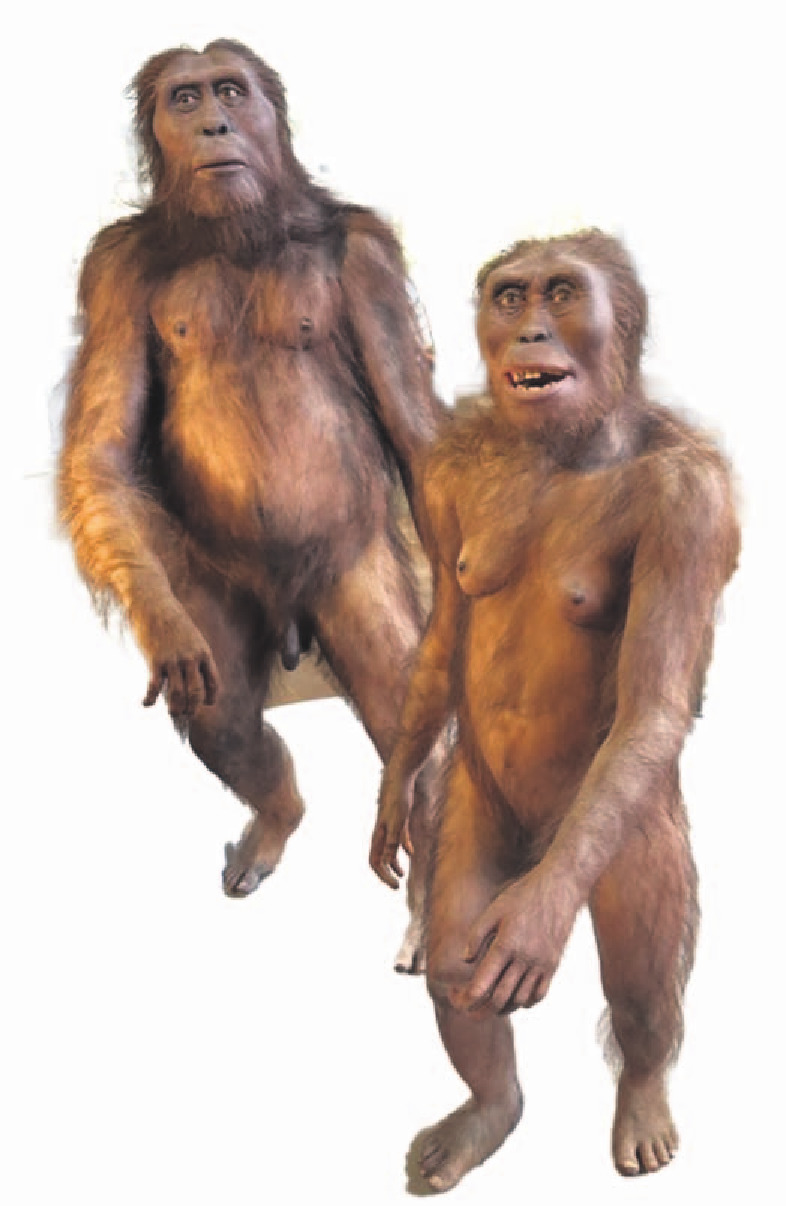
When it was fully revealed, the anatomist Raymond Dart recognised it as a possible human ancestor, and named it Australopithecus, meaning "Southern Ape". His publication suggesting that the species was a vital missing link, was met with scepticism, but since then, it has been completely justified.
Many more bones of this species have been discovered since, the earliest being about 4.2 million years old. That was a time when the habitat in Africa become more open, and the lakes and rivers were fringed by gallery forests, beyond which open savannahs stretched into the horizon.
New discoveries have now found that these "southern apes" were responsible for three of the profound changes that mark the evolution of humans, their descendants. The open savannahs instead of a forested habitat encouraged upright walking, and about 3.7 million years ago at Laetoli in Tanzania, three of them walked across soft ground, leaving behind their footprints. Light rain then helped to solidify their prints before they were covered by a fall of datable volcanic ash. At last, we have undoubted evidence that hominins were walking very like we do today.
In the Natural History Museum in Vienna last July, I took this photograph of two of those walkers.

However, specialists have found that by banging one stone against another 3.3 million years ago, Australopithecines created tools with a sharp cutting edge. What were these knives used for?
Archaeologists have identified the bones of hippos and antelopes that had been gnawed by lions that are covered by cut marks made by stone tools. So those first tool makers were scavenging and eating meat. Now, the brain needs about 16 times more energy than other bodily organs, and meat supplies it. So, we have a perfect triad of changes that multiplied upon each other: a fast running primate that made stone knives to scavenge lion kills and eat meat.
So, what did they look like?
In November 1974, Donald Johanson was on a field expedition in Ethiopia looking for our remote ancestors. His sharp eye detected a fragment of leg bone emerging from the ground. Further searching recovered about 40% of a female skeleton famously known as Lucy. Dated to 3.17 million years ago, she was little over 1m tall and weighed about 30kg.
Lucy walked upright, but had a brain of about the same size as a chimpanzee. She had been attacked by a predator, for there is a tooth imprint on her pelvis, but whether this led to her death is not known for sure. She belonged to a pivotal species on the slow journey to becoming human.












